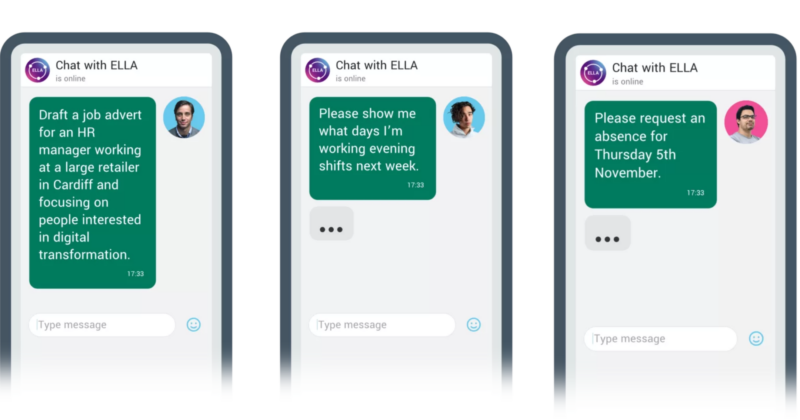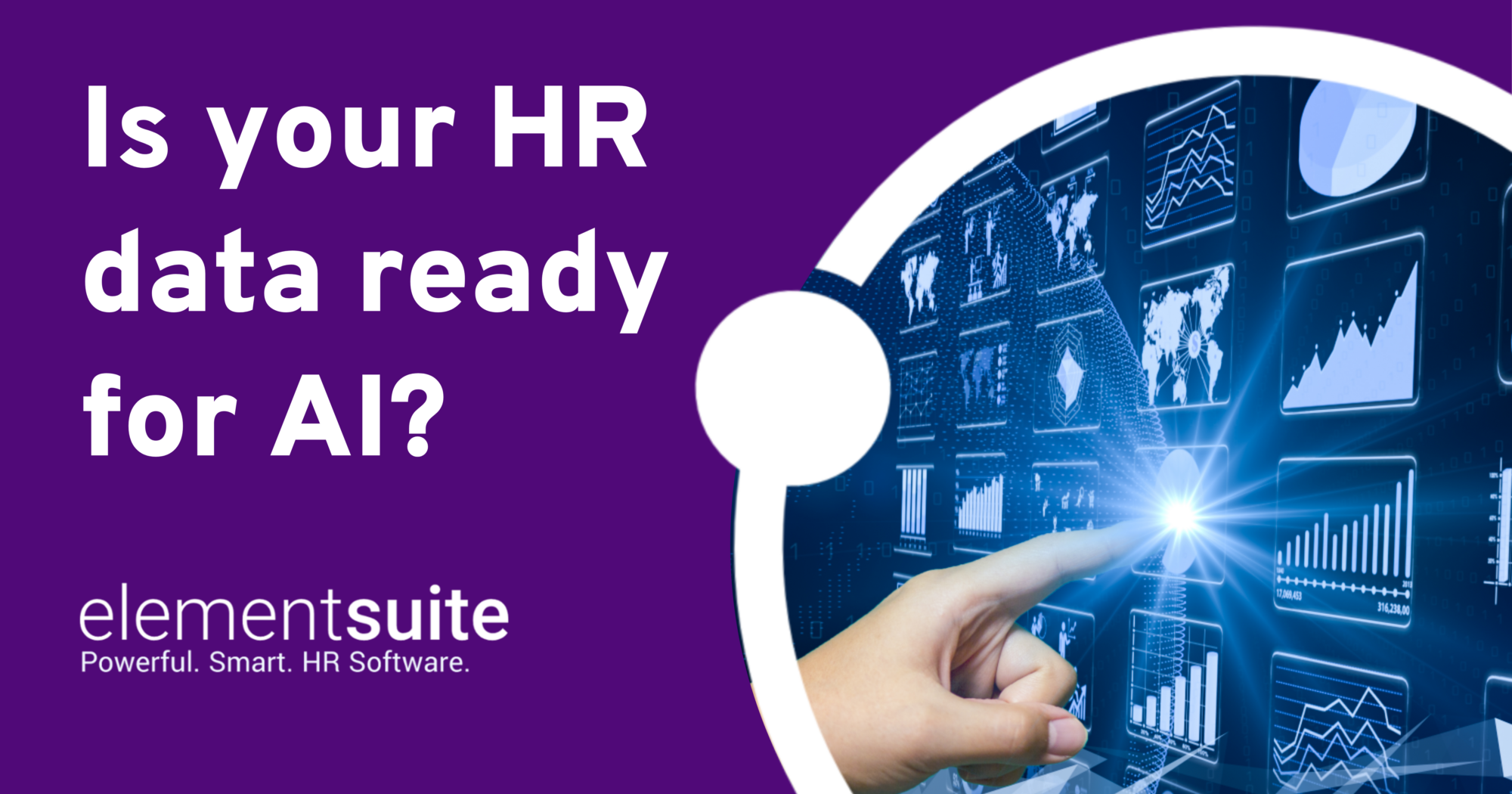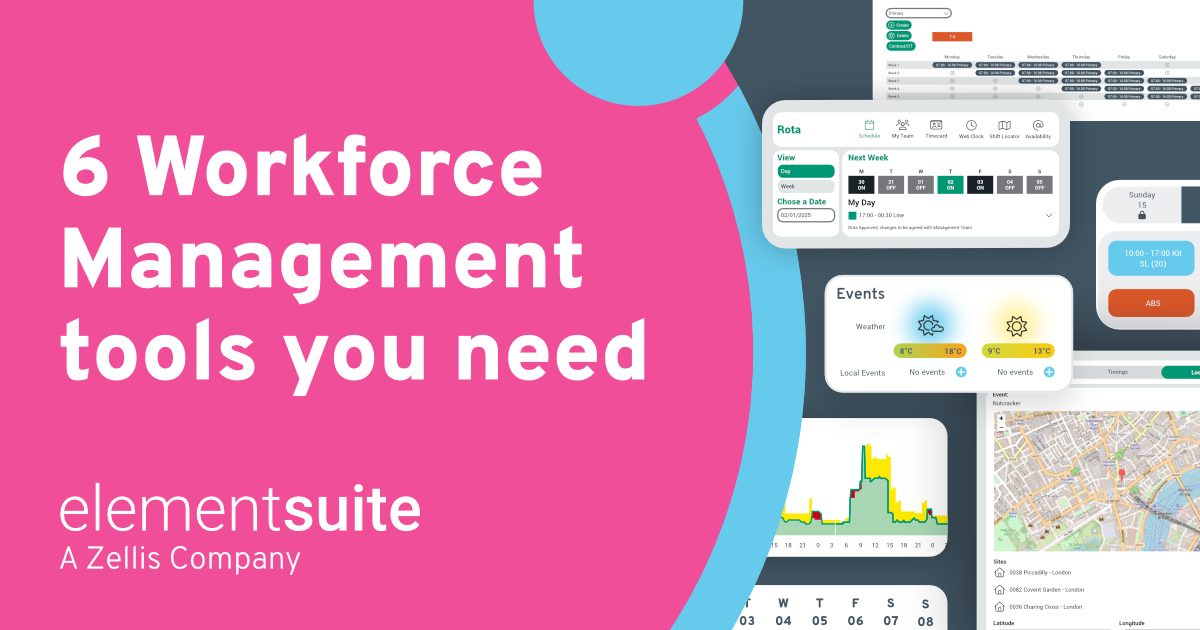In a recent poll with over 3,300 HR professionals, we found that 60% of HR leaders are actively looking to integrate AI into their processes. This is unsurprising given the growing recognition that AI can streamline operations, enhance decision-making, and improve employee engagement. But, AI integration will only be as successful as the foundations it is laid upon. Because of this, we wanted to create a piece of content to help you get started on your AI journey.
If there is something to say about Artificial Intelligence (AI), it is that its output is only as good as the data it has to work with. It requires quality data to generate reliable and accurate insights and a constant stream of real-time information to learn and adapt as it continues to process information.
So, is your HR data ready for AI?
Risks of poor HR data quality, security and privacy
When introducing workplace policies regarding AI and generative AI, several steps are non-negotiable: collaborating with IT to ensure data privacy, establishing frameworks for ethical AI usage, and building data literacy and algorithmic knowledge to maintain human oversight. However, the most critical and often overlooked aspect of ethical AI use is the quality of the data that feeds into it. Just as the saying goes, “garbage in, garbage out,” the same principle applies to AI. If you have flawed data, you will receive flawed outputs.
AI systems depend on extensive datasets to make informed decisions, and if this data is compromised by inaccuracies, biases, or inconsistencies, the AI’s conclusions will reflect these issues.
Take, for instance, one of the most well-known cases of biased AI in recruitment: Amazon’s 2014 AI recruiting tool. The system was trained on historical hiring data where the majority of successful candidates had been male. As a result, the AI learned to favour resumes that included traditionally male-associated terms, downgrading those from women, perpetuating existing biases in the company’s hiring practices and resulting in an unfair and biased selection process. Of course, once these biases were identified, the project was aborted. But needless to say, this is a great example of why your data needs to be monitored and audited to prohibit the same scenario from being replicated.
These risks also extend beyond talent management insights for HR professionals. When investing in AI or employee self-service, if the data that the AI is fed is incorrect, then the information provided will also be misleading.
A good example here is annual leave requests and approvals. Let’s say an employee wants to request annual leave. The AI tool tells them they have 15 days of available leave based on historical records. However, due to an error in data entry, the actual number of available leave days is only 5. Based on the incorrect AI output, the employee submits a leave request for 10 days, which the system approves. You later realise that the employee doesn’t have enough leave, resulting in a denial of the annual leave or potential conflict over leave balance corrections. Your employee is then frustrated, there is a loss of trust in the system and inevitably a dissatisfaction with the company’s processes.
This is why a proactive approach in ensuring your HR data is of a high quality and free from biases is an absolute must. In the next section we will talk more in detail on how to ensure high data quality. However, as a rule of thumb, you should be conducting data audits, investing in technology that can automate and allow for easier and more accurate data input, and closely monitoring the data that feeds into AI systems to identify potential biases or inaccuracies.
You also need to be mindful of the privacy and security of your HR data when getting it ready for AI. Data breaches, cyberattacks, or even internal misuse of data can compromise its integrity. Therefore, establishing strict data privacy protocols, training employees on proper data handling and implementing robust security measures is critical in maintaining the quality and integrity of your HR data.
Really and truly, your HR software should have safeguards for data privacy, quality checks and can demonstrate a clear understanding of the processes that lead to AI decision-making. However, it is highly recommended that you also make a conscious effort to continuously monitor your data and ensure it remains clean, accurate, and free from bias, as this will ultimately impact the success and fairness of AI in the workplace.
Check out our HR toolkit for a FREE comprehensive guide on how to clean your HR data
The importance of unified HR systems for AI integration
So, for HR leaders eager to harness the power of AI, the first step is ensuring that your people data is ready. This means ensuring that your HR data is:
- Accurate: The data must be free from errors and reflect the true state of HR activities, such as employee demographics, performance evaluations, and compensation data.
- Consistent: To avoid discrepancies, data should be uniform across different systems and time periods. This means using the same labels for job titles, departments, and other categories across all systems.
- Comprehensive: Data must cover all relevant aspects of HR to provide a complete picture.
- Timely: The most current data is necessary to ensure AI-driven decisions are relevant and up-to-date.
- Secure: Data should be stored and accessed securely, ensuring the privacy and confidentiality of employees’ personal information.
The problem that most HR departments have is that their people data is scattered across multiple systems and databases, making it difficult to maintain data quality. They have one system for performance management, one for recruitment, another for payroll, and so on. This fragmented approach to HR leads to siloed data and inconsistent processes, skewing the AI’s training data, leading to biased outcomes and potentially undermining the credibility of AI-assisted decisions. Let’s not forget the different security and privacy protocols that might exist in these different systems, making it hard to monitor and maintain data integrity.
The solution? An all-in-one HR system. When all components of HR management—such as recruitment, performance, payroll, workforce planning and employee engagement—interact within a unified framework, the data flows effortlessly between these modules.
The AI tool, in turn, has a broader and more diverse dataset to learn from, resulting in more accurate insights and recommendations. They are being trained on a consistent and comprehensive dataset, reducing the risk of bias and ensuring ethical use. And most importantly, everything is secure and accessible in one central location, minimising the risk of data breaches.
Disparate systems often require multiple points of integration, each of which can become a potential vulnerability. A unified system, however, consolidates these points into a single, more easily managed structure, ensuring that data remains secure.
Essentially, to prepare your HR data for AI, you need a reliable and unified HR system—much like a data lake that guides AI-driven decisions. It’s all about having the right foundations in place before integrating AI into your HR processes.
So, if you’re thinking about incorporating AI into your HR strategy, make sure to first evaluate the state of your HR data and take steps towards unifying and improving it. Invest in an all-in-one HR system that can serve as a secure and reliable foundation that will future-proof your HR data management and equip you with the tools necessary to unlock the full potential of AI in HR. Then, with a unified system in place, you can confidently embrace AI and use it as a powerful tool to drive better decision-making, improve employee experiences, and ultimately, enhance your organisation’s performance.
Getting started with AI without a comprehensive data set
But not everyone has a comprehensive data set to work with at the beginning. However, this shouldn’t discourage you from exploring AI integration. Think big, start small.
Begin by identifying smaller processes within your HR operations that can benefit from AI enhancements. You could start with recruitment or staff scheduling, then slowly integrate AI into your overall HR data flow to ensure that you’re always working towards an end-to-end, unified AI system.
It’s all about testing the waters and building confidence without needing to overhaul your entire HR infrastructure. As you gain experience and gather more data, you can then gradually expand the use of AI in other HR areas.
How long until you start seeing benefits?
The time it takes to start seeing benefits from AI depends largely on the scale of the process being automated, the quality of the available data, and the complexity of the AI implementation. For smaller, targeted processes like automating recruitment processes or handling basic employee inquiries, you can expect to start seeing measurable improvements in as little as a few weeks to a couple of months.
For more complex processes, such as a full AI HR transformation, it may take longer—typically several months to a year—before the AI system has enough data to deliver meaningful, reliable results. Hence the importance of continuous data collection and refinement for AI success in HR.
But once you have a well-trained AI system in place, it can be a game-changer for HR operations. With AI’s ability to handle large amounts of data and quickly deliver accurate insights, your HR team and employees can save time and resources while making more informed decisions. And with a data-driven approach to HR, you will ultimately improve the employee experience, increase efficiency, and drive business success.
Selecting AI tools with HR in mind
When selecting AI tools for HR, there are a few things to keep in mind to ensure AI’s ethical and effective use.
Firstly, choose an AI tool that is specifically designed for HR processes. While some generic AI platforms may offer customisation options, it’s better to opt for a tool specifically tailored to HR needs. One that has been engineered to handle HR data and processes. If you have the resources to build one in-house, great. However, without being biased, your best bet is to invest in one built by an HR technology vendor who knows the HR tech world inside and out.
Secondly, consider the transparency and explainability of the AI tool. It’s important to understand how decisions are made by the algorithm and be able to explain these decisions if needed. Let’s face it: We have all heard about black boxes and hallucinations from AI—and we want to avoid that at all costs.
Look for tools that provide transparency and insights into their decision-making process. But, equally so, ensure that your HR team upskills themselves in understanding AI and the algorithms used. This will not only help with decision-making, but also ensure that any potential biases are identified and rectified.
Lastly, assess the ethics of the AI tool. Look for AI tools that have ethical guidelines and checks in place to prevent biased outcomes. Engage with the AI vendor to understand their data collection and training processes and any measures they have in place for data privacy, security, and continuous improvement.

ELLA by elementsuite is designed specifically for the HR function. ELLA is specifically engineered to operate within the secure environment of an organisation’s HR systems, ensuring that data remains private and protected through authentication and authorisation.
ELLA can even be layered on top of your existing HR system, integrating seamlessly to enhance your existing setup without the need to overhaul your existing HR tech infrastructure.
With ELLA, you have a reliable, secure and transparent AI tool to assist your HR team in making informed decisions and driving meaningful outcomes for your organisation. You can learn more about ELLA’s functionality here.
Take home points
In all, before you start investing in AI for HR, ensure that your HR data is accurate, consistent, comprehensive, timely, and secure. And the best, if not the only, way to do this is through investing in an all-in-one HR platform, like elementsuite, that holds all your data in one secure location.
Then, when it comes to selecting an AI tool for HR, choose one that is specialised for the function, transparent and explainable, and has ethical measures in place. With these foundations in place, your organisation will be ready to leverage AI’s potential for more efficient, effective, and ethical HR processes.
If you want to learn more about how elementsuite can get your data AI ready or are looking for a customised AI solution for your HR needs, contact us today. Let’s bring your HR into the future.




